Indo-Pacific
International Relations > Regions
The Indo-Pacific, the immense and increasignly-interconnected space formed by the Asian countries located along the shores of the Indian and Pacific Oceans, is dynamic macro-region whose relevance is increasing constantly.
The area holds a significant share of the world's GDP, trade volume, and population; and it is home of huge developed economies like Japan, China and South Korea as well as of fast-growing ones such as Vietnam, India or Indonesia.
But the Indo-Pacific is also home of regional rivalries and strategic challenges that threaten international stability.
The United States maintains a strong military and political presence in the region; and this causes tensions with the PRC, its main competitor in both regional and global terms.
The rise of China is not only a matter of extraordinary economic growth, since it is accompanied by a military buildup and by a more assertive international stance. However, its rise is made more difficult by a series of challenges of demographic, economic, and political nature; and how China will handle them will determine its role in the upcoming decades.
Beijing is also involved in the main territorial disputes in the region, namely the one in the South China Sea with several South-East Asian states, the one over the Senkaku / Diaoyu islands with Japan, without forgetting the particular and decade-long diatribe about the sovereigny over Taiwan; and all such situations have the potential to spark a conflict that may easily degenerate.
Another longstanding probelm for regional stability is the situation in the Korean peninsula. Reunification remains a far-away objective, and the North's nuclear programme is causing concern among its neighbors and the rest of the international community; and this may also result in an all-out war with dramatic consequences.
On its part, South-East Asia is home to many emerging economies. It is also the stage of a regional integration experiment (ASEAN), but its success remains limited. In addition, it is an area marked by ethnic and religious tensions; and it is a battleground of great power competition since it connects the Pacific and Indian Oceans.
This brings us to South Asia, where India is also rising as a great power. However, it must cope with Pakistan and China: the two are close aprtners and India has unsettled territorial disputes with both, most notably the one over Kashmir with Pakistan.
The region is also witnessing a rise in nationalist discourse, which is a dangerous mix when combined with the aforementioned tensions and a generalized military build-up.
In short, the Indo-Pacific will have a central importance on international affairs in the future, but there are various factors at play that may destabilize it with dangerous consequences.
The Regional Comprehensive Economic Partnership (RCEP)
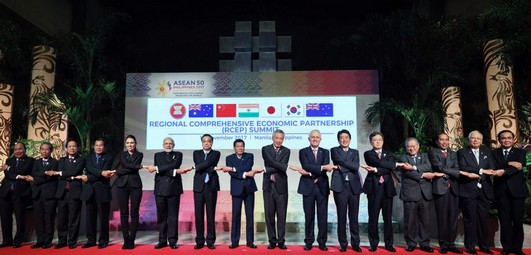 The Regional Comprehensive Economic Partnership (RCEP), signed in November 2020 by fifteen countries of the Asia-Pacific region, represents one of the world’s largest free trade agreements (FTA). It seeks to liberalize trade between the emerging markets of the Association of Southeast Asian Nations (ASEAN) and advanced economies like China, South Korea, and Japan – three countries that will undergo this kind of economic integration for the first time.
The Regional Comprehensive Economic Partnership (RCEP), signed in November 2020 by fifteen countries of the Asia-Pacific region, represents one of the world’s largest free trade agreements (FTA). It seeks to liberalize trade between the emerging markets of the Association of Southeast Asian Nations (ASEAN) and advanced economies like China, South Korea, and Japan – three countries that will undergo this kind of economic integration for the first time.As it always happens in such cases, the effects of the RCEP will not be immediate and will not be equally distributed among members; but the reduction of tariffs and, most importantly, non-tariff barriers will spur economic growth in the medium-long term. And one country will be conspicuously absent from the region’s economic fortunes: the United States.
Photo credit: 2017 RCEP Leaders’ Meeting (5) (modified), Presidential Communications Operations Office (Philippines), published under public domain.
Will the Quad Give Way to the Quint?
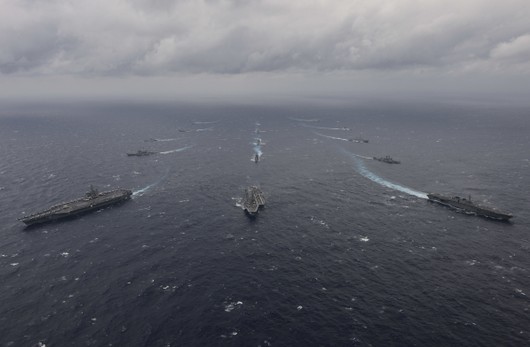 The Quadrilateral Security Dialogue, more commonly called the QUAD, is an informal grouping composed of the United States, Japan, Australia, and India, which is becoming an important diplomatic forum to foster security cooperation between these powers, particularly in reaction to China’s rise and activities in the Indo-Pacific.
The Quadrilateral Security Dialogue, more commonly called the QUAD, is an informal grouping composed of the United States, Japan, Australia, and India, which is becoming an important diplomatic forum to foster security cooperation between these powers, particularly in reaction to China’s rise and activities in the Indo-Pacific.As concern over the PRC grows, other powers may decide to join the group, which will inevitably have repercussions on the Quad’s inner security dynamics, allowing it to evolve into an official security platform or, given enough time, even a collective security organization.
Photo credit: Indian, Japanese, U.S. Warships Build Maritime Interoperability in the Indian Ocean, U.S. Navy photo by Mass Communication Specialist 3rd Class Cole Schroeder, published under Attribution-NonCommercial-NoDerivs 2.0 Generic (CC BY-NC-ND 2.0).
What Would a China-India War over the Himalayas Look Like?
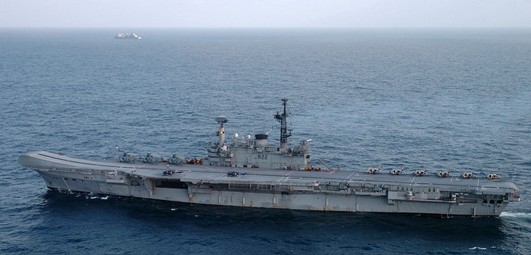 Amid growing tensions in various parts of the world, last June Indian and Chinese forces clashed along the Himalayan border between the two countries.
Amid growing tensions in various parts of the world, last June Indian and Chinese forces clashed along the Himalayan border between the two countries.Even though it is likely that the dispute will remain circumscribed to the disputed territories along the Line of Actual Control (LAC), the great power ambitions and the nationalist drives in both states could turn an isolated incident into a broader conflict. If this happens, then the maritime dimension may play a decisive role in the final outcome of the war.
In this article published on Geopolitical Monitor (subscription required), I examine this aspect as well as the nuclear equilibrium between the two powers.
Photo credit: US Navy 050925-N-0413R-043 The Indian aircraft carrier CVH Viraat (R 22) underway in the Indian Ocean as part of exercise Malabar 2005 (modified), U.S. Navy photo by Photographer’s Mate 3rd Class Shannon E. Renfroe, published under public domain.
Kashmir: Past, Present and Future
 Tension has recently soared in Kashmir following the decision by Indian government led by Prime Minister Narendra Modi to revoke the region's special status granted by Article 370 of the Constitution. This is a major shift that will have a sensible impact on the stability of the region.
Tension has recently soared in Kashmir following the decision by Indian government led by Prime Minister Narendra Modi to revoke the region's special status granted by Article 370 of the Constitution. This is a major shift that will have a sensible impact on the stability of the region.As a matter of fact, Kashmir is the main hotspot between India and Pakistan, but China is also involved. This is an important factor, since New Delhi is deeply concerned about the ever stronger friendship between Islamabad and Beijing. Considering that all three are nuclear-armed powers, any crisis in the area could have serious consequences. Yet, to properly understand the issue, it is necessary to examine the history of the dispute and the geopolitics of the region, including the interests of the various powers involved.
This is the purpose of this 5,000 words report that I wrote in collaboration with KJ Reports. If you are interested in the region's geopolitics, please consider subscribing or buying by clicking here.
Australia & China's Rise
 Australia has been a loyal supporter of the US-centred international order for decades. But like many other powers in the Indo-Pacific, today it must cope with China’s rise.
Australia has been a loyal supporter of the US-centred international order for decades. But like many other powers in the Indo-Pacific, today it must cope with China’s rise.The PRC is a primary economic partner, but it is also a geopolitical challenge due to its growing presence in the countries around Australia.
As such, relations with Beijing and Washington will shape Canberra’s foreign policy in the years to come.
The EU & The South China Sea Dispute
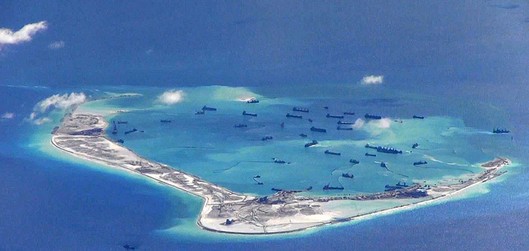
The South China Sea (SCS) is an area of interest for the European Union. It is a vital maritime crossroad between the East and the West, but it is also the setting of one of the world’s most intricate territorial disputes. Yet, there are noteworthy contrasts in regards to the issue among the Union’s Member States.
The current EU-level position is the result of a compromise where economic considerations have a greater impact than security ones. As such, while the Union officially maintains neutrality, in practice it implicitly condemns China’s actions; but this stance will hardly hold in the long term.
Will Pakistan's Oil Discoveries Change its Geopolitical Fortunes?

The Pakistani authorities have recently announced that a considerable oil & gas field has been found in the seabed off Karachi’s coast. While exploration surveys to assess the real scope of the untapped reserves are still ongoing, the first findings suggest that these deposits could radically transform Pakistan’s role in the energy market.
But beyond the economic dimension, what will be the international implications of the discovery?
To learn more about this topic, have a look to my contribution to KJ Reports by clicking on this link.
Photo credit: USAID participates in 11th International Pakistan Oil Gas Energy Exhibition (13303021175), USAID Pakistan, published under public domain.
EU Arm Sales to Asia
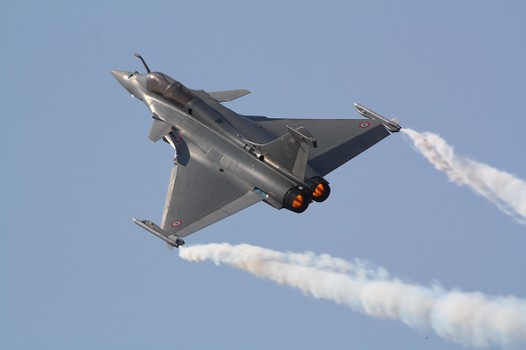 The European Union is often considered a minor actor in security affairs. This is especially true in Asia, a region of primary economic importance for the Union but where it plays a very limited role.
The European Union is often considered a minor actor in security affairs. This is especially true in Asia, a region of primary economic importance for the Union but where it plays a very limited role.In reality, several European states are important arms suppliers for Asian countries; but this is mainly the result of their own initiatives rather than of a unified and coherent EU-level strategy. Still, Europeans are contributing to region’s evolving security dynamics, and this will inevitably have political repercussions.
Photo credit: Rafale at Aero India 2017, Aksveer, published under Creative Commons Attribution-Share Alike 4.0 International.
The Rise of Indonesia
 Indonesia is the world’s largest Muslim country by population and is one of South-East Asia’s most dynamic economies.
Indonesia is the world’s largest Muslim country by population and is one of South-East Asia’s most dynamic economies.Located at the juncture between the Pacific and Indian Oceans, it has the potential to become a leading regional power.
However, its location is also a source of considerable challenges that Indonesia will have to manage attentively in the coming years.
Vietnam-China Relations & The South China Sea
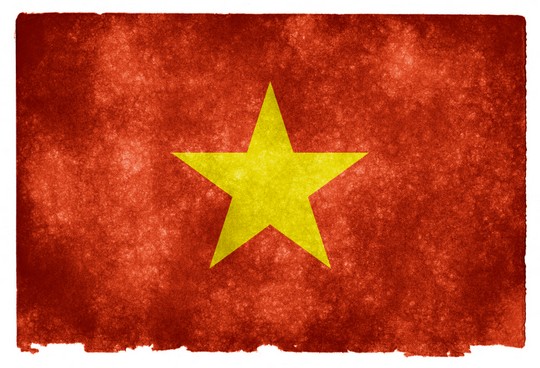 Vietnam is modernising its military and fostering ties with the US and other countries.
Vietnam is modernising its military and fostering ties with the US and other countries. In a broader context of US-China competition, it seems that Vietnam will play an increasingly important role; but at the same time, this will put it in a collision course with the China, with potentially detrimental consequences for international security and for the regional stability of an area marked by territorial disputes.
Only time will tell what will happen, but it seems that Sino-Vietnamese relations will follow a downgrading course in the coming years.
Photo credit: Vietnam Grunge Flag, Nicolas Raymond, published under Stockvault.net Commercial License.
Will Korea Ever Reunify?
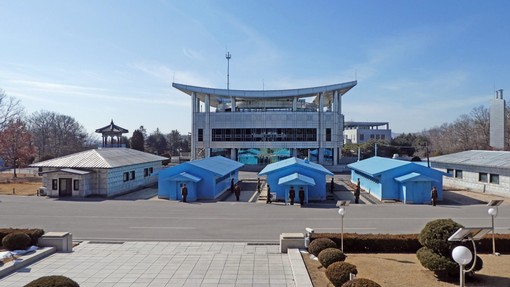 Since 1953, the Korean peninsula is divided by a frozen conflict that still awaits a definitive settlement.
Since 1953, the Korean peninsula is divided by a frozen conflict that still awaits a definitive settlement. The recent developments as the signs of détente between North and South Korea or the meeting between the former’s leader Kim Jong Un and US President Donald Trump leave some hope over a peaceful resolution of the Korean issue.
But will it actually be the case?
Probably not, since the regional geopolitical situation plays against this outcome.
The Geopolitical Impact of Climate Change in Vietnam
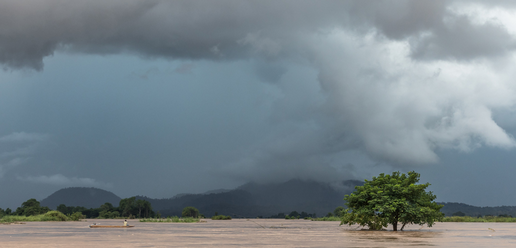 Climate change is not only an environmental matter. It also has major security implications and Vietnam is among the countries to be mostly affected.
Climate change is not only an environmental matter. It also has major security implications and Vietnam is among the countries to be mostly affected.In the coming years it will suffer more and more from phenomena like rising sea level, extreme weather and floods. Apart the already considerable environmental and economic problems consequences, it will also cause notable humanitarian and political problems as the deterioration of living conditions may lead to a migration crisis and delegitimize the rule of the CPV. Combined with the overexploitation of maritime resources, this could also cause a surge in piracy in the contested waters of the South China Sea, an essential seaway for international trade; and could provide China a justification for extending its (military) presence in the area.
Photo credit: Submerged tree under a dark and cloudy sky in Si Phan Don (modified), Basile Morin, published under Creative Commons Attribution-Share Alike 4.0 International.
Beyond Economics: The Political Risks of a US-China Trade War
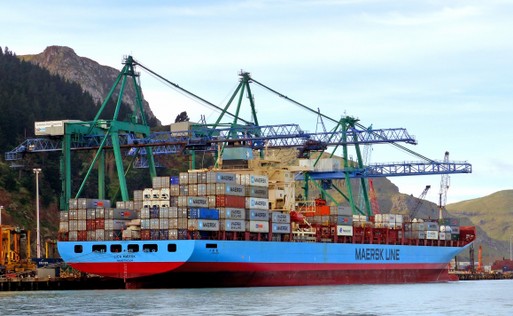 The prospect of a global-scale trade war initiated by the Trump administration against the EU and especially China has sparked an intense debate. But while most analysts and politicians focus on the economic consequences this could have, fewer have considered the potential political fallout.
The prospect of a global-scale trade war initiated by the Trump administration against the EU and especially China has sparked an intense debate. But while most analysts and politicians focus on the economic consequences this could have, fewer have considered the potential political fallout.In the article on I examine this aspect by applying a theoretical model presented by M. Sahlins in his book Stone Age Economics. Trade is not only about exchanging goods, it's also a social activity that can be assimilated to one of the three forms of reciprocity that Sahlins identifies, namely the one he defines as balanced reciprocity: an impersonal yet peaceful exchange. But if states start clashing over trade, there is a risk that they will shift towards negative reciprocity, whose characteristic activity is war.
Photo credit: Lica Maersk, Bernard Spragg, published under public domain (CC0 1.0 Universal (CC0 1.0) Public Domain Dedication).
Geopolitical Realities Threaten to Derail Trump-Kim Summit
 The recent diplomatic developments concerning North Korea, and especially the announcement of a Trump-Kim meeting, have caused much debate among analysts. Many media presented it as a turning point, presenting it as a success of tight sanctions (a discourse also heard at the political level).
The recent diplomatic developments concerning North Korea, and especially the announcement of a Trump-Kim meeting, have caused much debate among analysts. Many media presented it as a turning point, presenting it as a success of tight sanctions (a discourse also heard at the political level). But if we look at the past, we see that Pyongyang has constantly been using its nuclear programme also as a mean to obtain international economic aid in the logic of regime preservation. As such, North Korea's offer to negotiate is consistent with its grand strategy and does not represent any "revolution" of sort. In addition, the upcoming talks [which eventually took place in June 2018] will hardly solve anything, because the geopolitical reality of Korea remains virtually unaltered.
Photo credits: Donald Trump, Gage Skidmore, published under Attribution-ShareAlike 2.0 Generic (CC BY-SA 2.0).
A ‘Preliminary Agreement’: US, China And Solution To North Korean Nuclear Crisis
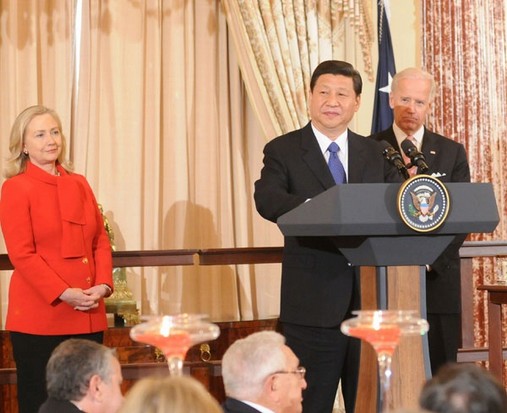 The North Korean nuclear issue remains one of the most delicate on the global scene. Even though the recent diplomatic opening between the US and the DPRK has easened tension to some degree, the problem is far from being definitively solved.
The North Korean nuclear issue remains one of the most delicate on the global scene. Even though the recent diplomatic opening between the US and the DPRK has easened tension to some degree, the problem is far from being definitively solved.In this article I argue that the only way to solve the issue is a coordinated US-PRC action; but this demands a 'preliminary agreement' between the two powers that must determine the future geopolitical order in Korea in case the North collapses and the Peninsula is reunited. In particular, this deal must rassure Beijing that reunification will not represent a threat to Chinese national security.
Full article available here on Eurasia Review.
